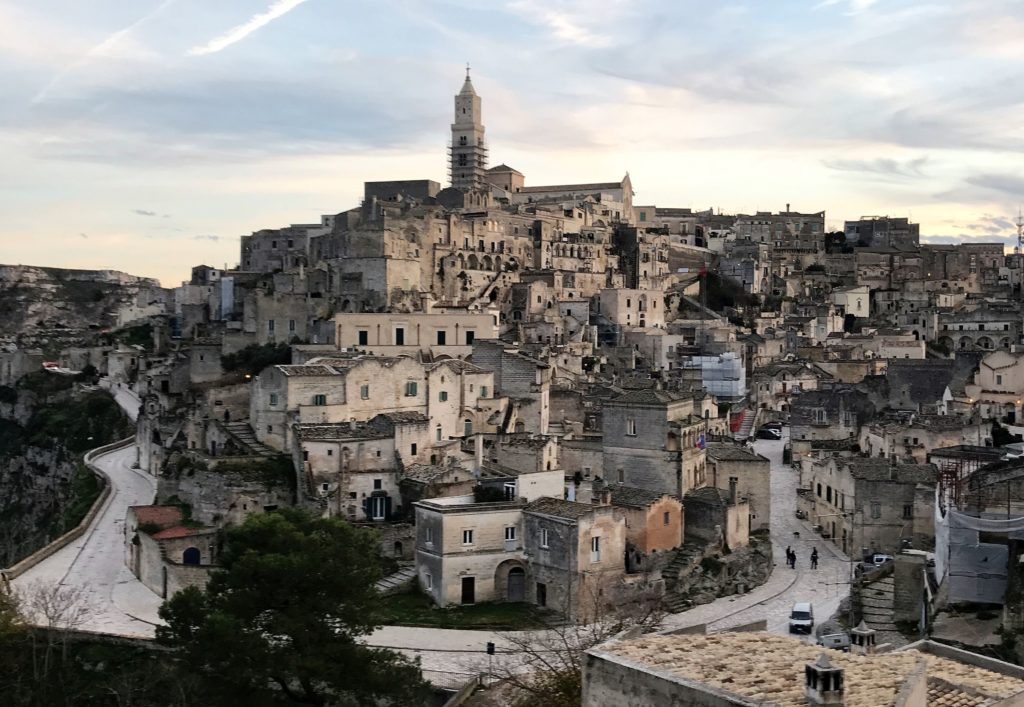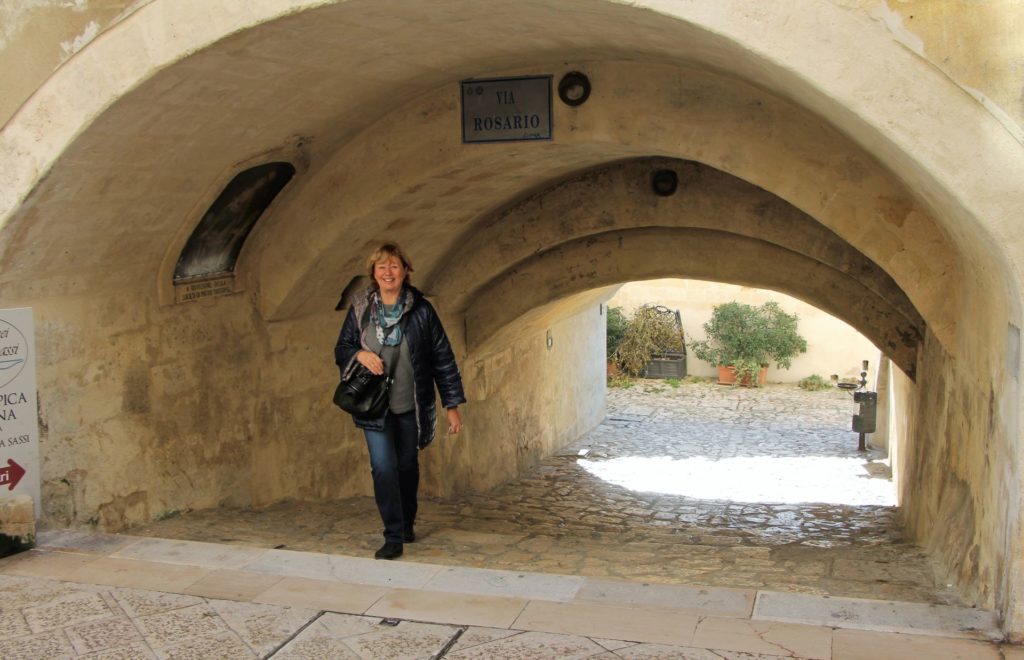Although I have crisscrossed Italy several times, I had never visited Matera, a town in the province of Basilicata, which is also known as ‘la Città Sotteranea’ (the Underground City) or ‘City of Cave Dwellings’.
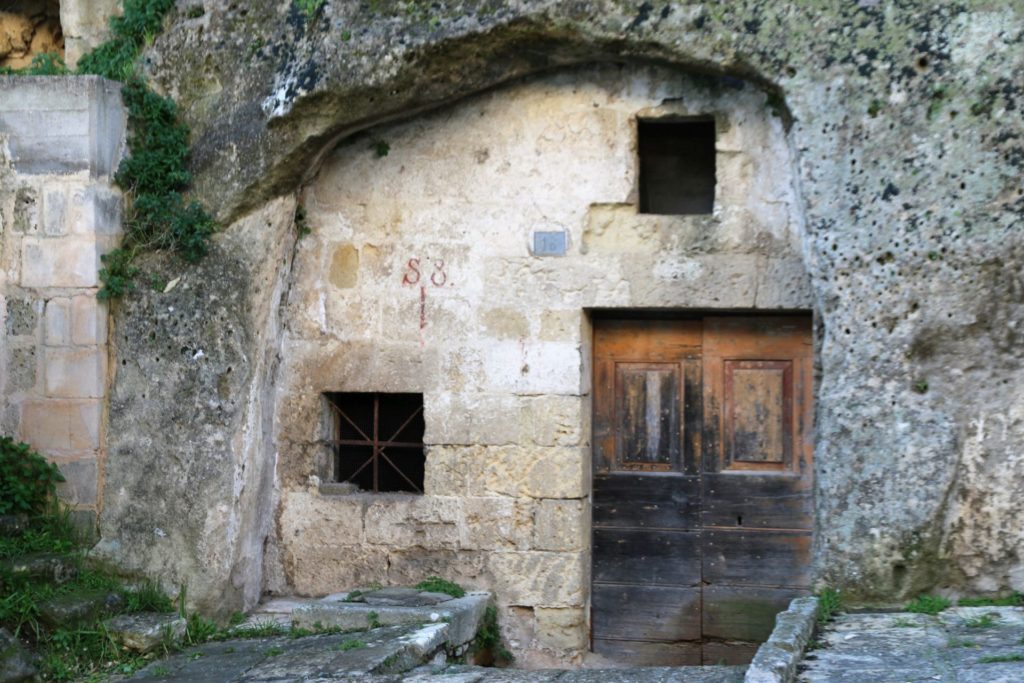 So when we spent our last Christmas holidays in southern Italy, one of our goals was to visit Matera – first of all because its historical center ‘Sassi’ was declared UNESCO World Heritage Site in 1993.
So when we spent our last Christmas holidays in southern Italy, one of our goals was to visit Matera – first of all because its historical center ‘Sassi’ was declared UNESCO World Heritage Site in 1993.
And that was not the only reason: Matera has also become Italian host of the European Capital of Culture for 2019, together with Plovdiv in Bulgaria. A fact that made me quite curious; and indeed, Matera turned out to be really unique and fascinating!
Why is this place so spectacular? Just imagine a city where people dug their houses into caves and rocks in the steep slope of a ravine, thus creating a town with winding staircases, streets that run on top of dwellings and numerous caves connected by underground tunnels and passages.
Matera has been inhabited since the 10th millennium BC. The Sassi originated in a prehistoric troglodyte settlement; they are thought to be among the first human settlements in what is now Italy. Today’s ancient town emerged on one slope of the rocky ravine, ‘la Gravina’.
Until the 1950s, Matera was a place of poverty, malaria and high rates of infant mortality, where people lived in caves without natural light, electricity, ventilation, running water or sewerage. As the Italian government became aware that the Sassi were a ‘national disgrace’, the authorities started to relocate about the 30,000 inhabitants to new public housing in the modern part of the city.
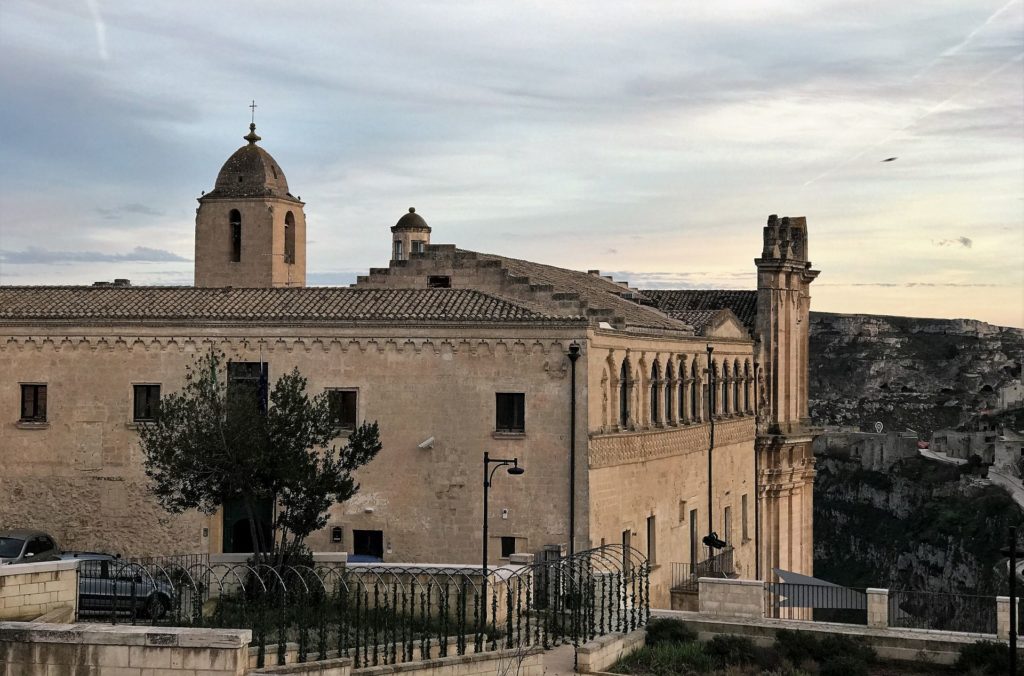 Today, many things have changed. The city is among the fastest growing in southern Italy and the young generation is bringing the caves back to life. Dwellings are transformed into B&B, pubs, shops and restaurants. Last year, Matera had around 600,000 visitors, most of them Italian tourists. So far it has remained relatively unknown to foreigners.
Today, many things have changed. The city is among the fastest growing in southern Italy and the young generation is bringing the caves back to life. Dwellings are transformed into B&B, pubs, shops and restaurants. Last year, Matera had around 600,000 visitors, most of them Italian tourists. So far it has remained relatively unknown to foreigners.
As we intended to make a round trip through Apulia, we planned to spend one day in Matera and booked a B&B close to the historical center. The friendly host gave us a map of the town and showed us a nice itinerary for a walk around the two districts of the ancient town: Sasso Barisano and Sasso Caveoso.
A walk around Sasso Barisano
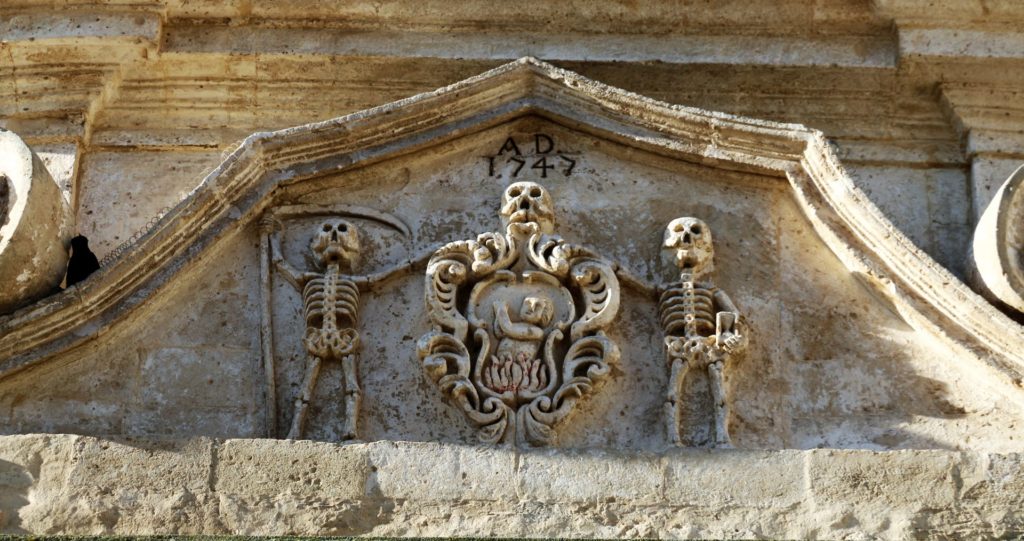 The same afternoon we explored Sasso Barisano. This part of the city is already well-developed, with old caves beautifully restored. We started our walk at the St. Agostino Monastery. This 16th-century complex was built by Augustinian friars; it is located at the edge of the ‘Gravina’ and offers fantastic views of the ravine and of the historical center with the 13th-century Apulian-Romanesque Cathedral on the top of the hill.
The same afternoon we explored Sasso Barisano. This part of the city is already well-developed, with old caves beautifully restored. We started our walk at the St. Agostino Monastery. This 16th-century complex was built by Augustinian friars; it is located at the edge of the ‘Gravina’ and offers fantastic views of the ravine and of the historical center with the 13th-century Apulian-Romanesque Cathedral on the top of the hill.
Roaming through the labyrinth of narrow streets, up and down uneven stone staircases, we discovered low archways and tiny courtyards. No trees, no grass, just a few cacti and flowers in pots. Baroque churches on each street corner. The most interesting was the Church of the Purgatorio that was adorned by numerous skulls and skeletons. The central square, Piazza V. Veneto, was nicely decorated and so was the main street, Via del Corso.
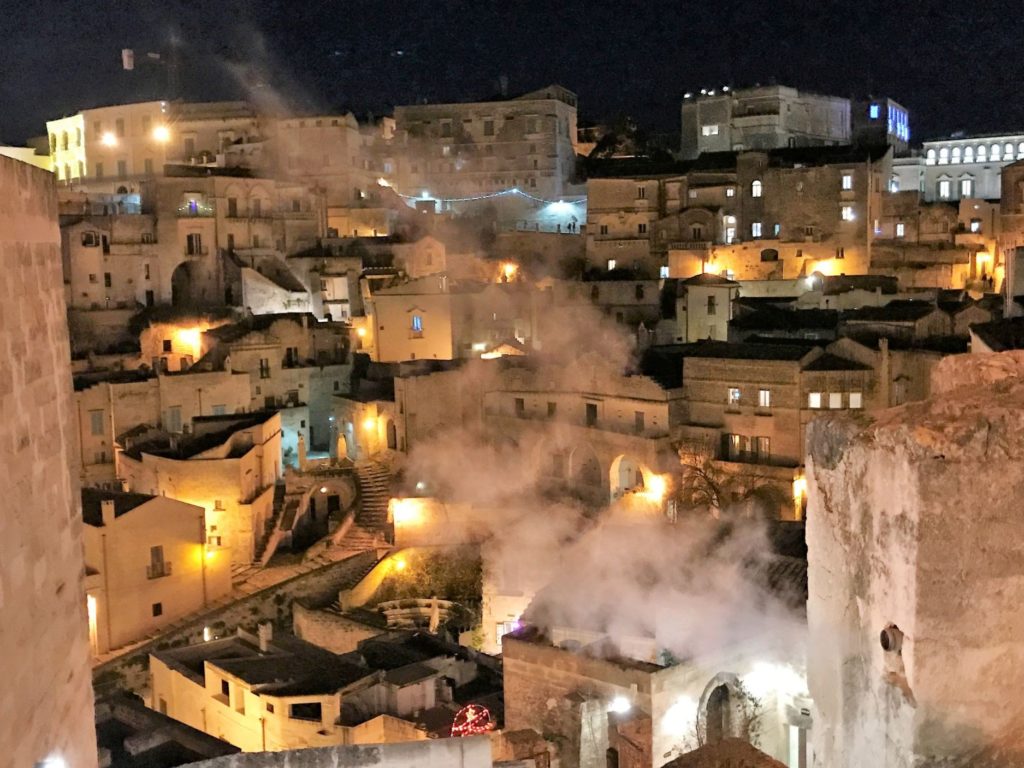 In the evening, with all the pretty lights and smoke coming from the chimneys, the place resembled a magical nativity scene. No wonder that Mel Gibson chose Matera as the scene for his movie Passion of the Christ. You really have the feeling as if you are in Jerusalem or Nazareth, 2,000 years back in time.
In the evening, with all the pretty lights and smoke coming from the chimneys, the place resembled a magical nativity scene. No wonder that Mel Gibson chose Matera as the scene for his movie Passion of the Christ. You really have the feeling as if you are in Jerusalem or Nazareth, 2,000 years back in time.
Unfortunately, we did not have enough time to visit the water cisterns and canal systems under the city. We were told that the largest cistern (under the central square) has a vault height of more than 15 m and that it looks like a real water cathedral.
A walk around Sasso Caveoso
Early next morning, we made a walk around Sasso Caveoso, where we could catch a real glimpse of the lives that were lived here until 60-70 years ago. Most caves seemed to be untouched and abandoned.
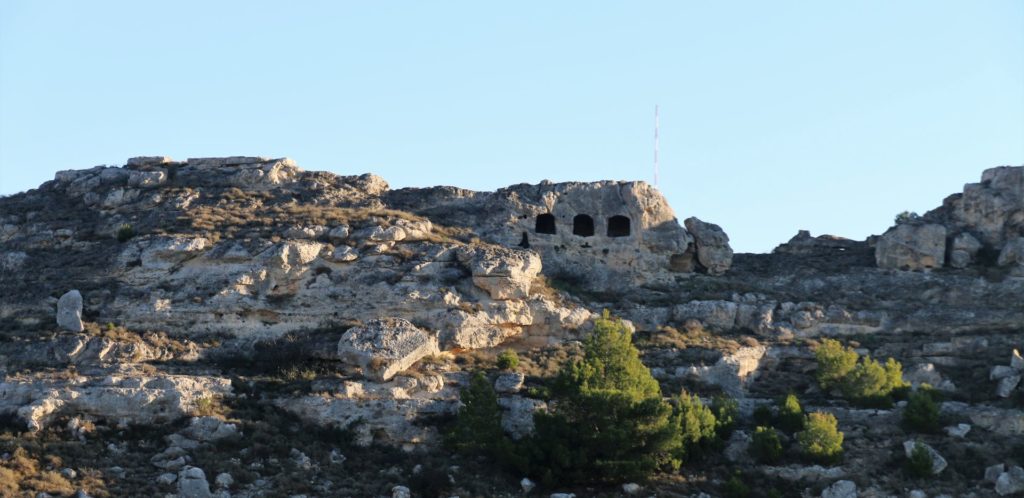 We walked – undisturbed by tourists and local people – along the ravine with a view of several rupestrian churches and neolithic caves on the opposite side of the deep canyon.
We walked – undisturbed by tourists and local people – along the ravine with a view of several rupestrian churches and neolithic caves on the opposite side of the deep canyon.
From the terrace of the Church of San Pietro Caveoso (13th century), on the edge of the ‘Gravina’, we had a breathtaking view of the surrounding landscape.
But the best way to imagine what it was like to live in Matera in the 18th century was a visit of the cave-dwelling ‘Casa Grotta di Vico Solitario’, which showed how an entire family (on average six members) including animals like mules, chickens, and pigs lived together in the cave.
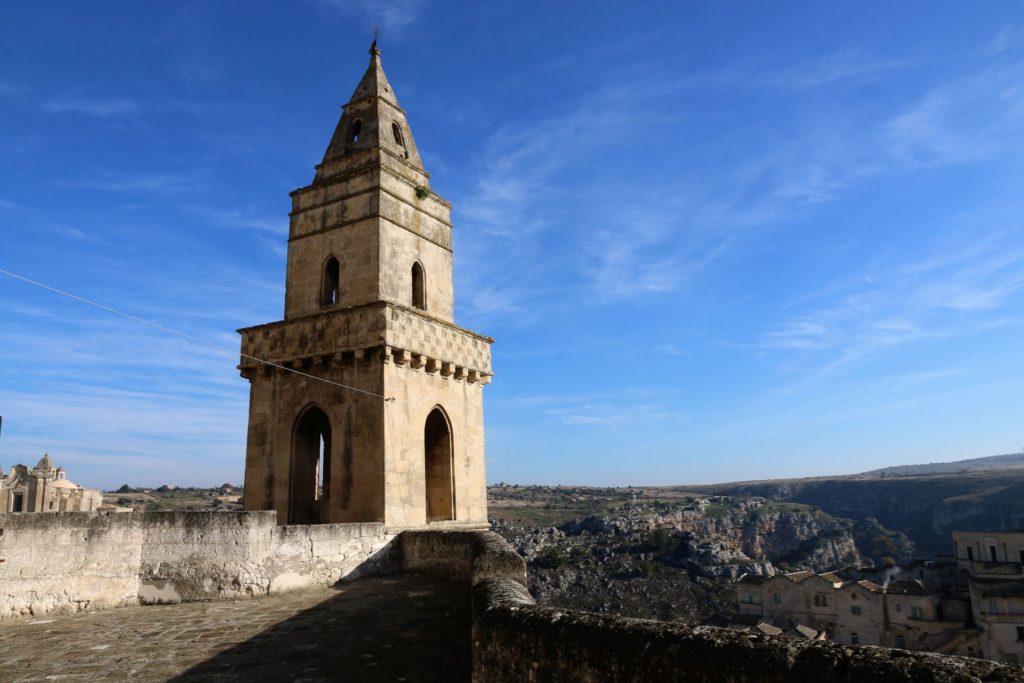 Finally, what we saw in this district was just a small percentage of ancient Matera. Most of it – caves, tunnels and cisterns – are still hidden.
Finally, what we saw in this district was just a small percentage of ancient Matera. Most of it – caves, tunnels and cisterns – are still hidden.
What a pity that we could not stay longer; not only because we did not have time enough to explore Matera in more detail, but also because we failed to discover the most beautiful rupestrian churches in the nearby region, the Murgia. They often go back to the 8th and 9th centuries and have fantastic frescoes in Byzantine style. A good reason to come back!
Matera and its surroundings are certainly worth a visit, in particular off-season, when the town looks like a magic scene!

